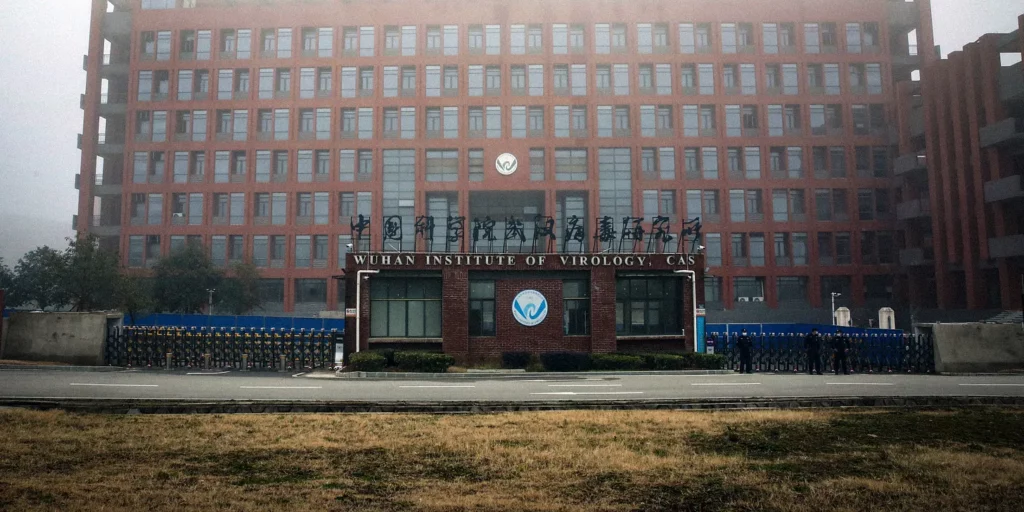
Did a Pandemic Really Begin in Wuhan?
By Chris Waldburger
Thomas Verduyn has written a startling, shocking essay for Panda that revisits Wuhan at the beginning of 2020.
We all recall the shock and awe delivered to us. A new kind of respiratory disease emerging from a ‘wet market’. People dying on the streets. Bodies piling up. Hospitals full.
And then a hard lockdown. And then a ringing endorsement from the WHO, proclaiming that China had blazed a trail in flattening the curve. And then whispers about a strange US-funded lab in Wuhan, with a ‘bat lady’ at the helm.
But how much of this was real? What was really going on?
Once again, we see that simply reading the data for ourselves dramatically alters our perception of the event. The flickering images fade away.
Verduyn points out that before the lockdown in Wuhan, the city had recorded 444 covid cases and 17 deaths, this in a city of 11 million people in which 22 500 people had died normally over that same 24-day period.
Did China lie about the numbers? In a certain sense, that is irrelevant. The entire WHO strategy would be predicated on the China ‘success story’.
So why did China lock down the city given these insignificant numbers? Was it because doctors had already noted just how deadly covid was?
From Verduyn:
Was there something particularly lethal about Covid that warranted it? Based on the number of reported cases (444) and deaths (17), the case fatality rate (CFR) of Covid in Hubei province as of 23 January 2020 was 3.8%. For all of China it was 2.6% (17 deaths, 643 cases). Although this is higher than that for influenza A, it is four times less than the CFR of SARS, thirteen times less than that for MERS, and there are several dozen other human infectious diseases with a CFR greater than 2.6%. Also, and more importantly, the CFR for any “unknown” disease will almost certainly appear much higher than it actually is until more information becomes available. Indeed, only one week later (1 February 2020), the CFR had already dropped to 0.7%, and was showing signs of being on par with the flu.
In short, lockdowns had nothing to do with science per se. Something else was going on.
The lockdown success proclaimed by the WHO is also fallacious. Travellers had been puring out of Wuhan in the days before the lockdown to celebrate the Chinese New Year. Quarantining the city was too lae, even if quarantine could have been necessary and useful.
Yet apparently it did work! And this became The Science we all had to trust, as the WHO issued similar guidelines around the world, implemented by most governments.
I encourage you to read the entire essay, but let me to turn to the conclusions made by Verduyn:
In consideration of these facts, we find:
- no evidence that the Chinese lockdown had any impact on the trajectory of either Covid cases or deaths.
- no evidence that SARS-CoV-2 was highly transmissible.
- no evidence that Covid was unusually lethal.
- no evidence that anything significant happened in China as a result of Covid (other than the lockdown itself).
- nothing that can support the WHO’s decision to consider Covid a pandemic.
… As such, we conclude that there was nothing worthy of being called a pandemic in 2020. Finally, since Covid did not spread out of Wuhan despite five million travellers to other Chinese provinces (a “super-spreader” event of epic proportions), we find no reason to think that it spread out of Wuhan to other countries either.
In light of the above, it is worth turning next to a recent official statement from Panda, a statement of the organisation’s current understanding of what happened in 2020:
The conventional understanding and public perception of a pandemic is one associated with the spread of a disease which a) increases the risk of death for many people, including the previously healthy, and b) directly causes a high number of deaths that would not have otherwise occurred.
Indeed, governing authorities and public health officials implied that everyone, regardless of age and health status, was susceptible to the new virus, anyone could die from it, and that infection by it created substandard immunity which needed augmenting by novel therapeutic injections.
However it quickly became apparent in 2020 that whatever “Covid” was, it did not seem to afflict the healthy any more than many other common respiratory infections, left huge swathes of the planet untouched (even with vast over-attribution), and had no discernible effects on global all-cause mortality.
Hence, under any reasonable and commonly held understanding of the meaning of the word “pandemic”, we were not experiencing one. This is so whether or not a novel virus did emerge at some point prior to 2020 to cause a novel disease referred to as “Covid-19”.
The statement goes even further. In the absence of any hard evidence, it is impossible to assert that there was any kind of novel virus spreading from person to person at all.
Where was the rippling of excess death through regions? Why did illness and death respect borders and varying national policies?
“Pandemic outcomes” differed hugely between neighbouring countries and regions, appearing to obey national, political and administrative boundaries. Differences in the ways in which panic, fear, hysteria spread, and the ways in which harmful pharmaceutical and non-pharmaceutical interventions were applied, are much simpler and more likely explanations for such observations than a spreading pathogen.
After all, we have samples of coronavirus from around the world before the Wuhan Event, yet no noticable excess illness or death. Media and mainstream science has never been able to account for this. Something else was spreading in 2020, namely, PCR tests:
PANDA believes that the rapid rollout of inappropriate, non-specific and oversensitive PCR testing created the illusion that something novel was spreading, whereas in fact all that was truly spreading was the testing itself. In many cases the testing was finding other known or unknown viruses, including those associated with normal seasonal coronavirus waves, whole or fragmented, infectious or not.
Where then did the excess death come from?
While we accept that front-line clinicians perceived the presence of a deadly and novel disease, this does not account for what would have been observed had people’s interaction with healthcare not been changed so dramatically and augmented by the relentless campaign of fear waged by governments. It is to be emphasised that the putative causative agent had spread widely across several areas without causing such effects well before the emergency was declared.
I am sure this will not be the final word, as we uncover more of the truth, but the logic seems inescapable to me.
The virus was a social virus, not a biological one.
Governments killed people, not something that came out of Wuhan.
In 2020, we entered a wilderness of mirrors, a new era of elite-led psychological operations.

Event 201, August 2019, Johns Hopkins Bloomberg School for Public Health: a tabletop exercise for an upcoming coronavirus pandemic, sponsored by the Gates Foundation
And the work of shattering those mirrors into a thousand pieces remains unfinished.
- Chris Waldburger is a writer based in Africa, from where he criticises our current global regime. His work can be found at ChrisWaldburger.substack.com <http://ChrisWaldburger.substack.com>. His debut book, /Rage and Love: A Memoir of White South Africa in an Age of Destruction <https://a.co/d/85mUgIR>/ is available on Amazon.